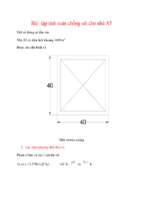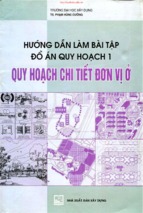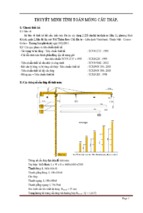Technology:
A World History
The
New
Oxford
World
History
Technology:
A World History
Daniel R. Headrick
1
2009
1
Oxford University Press, Inc., publishes works that further
Oxford University’s objective of excellence
in research, scholarship, and education.
Oxford New York
Auckland Cape Town Dar es Salaam Hong Kong Karachi
Kuala Lumpur Madrid Melbourne Mexico City Nairobi
New Delhi Shanghai Taipei Toronto
With offices in
Argentina Austria Brazil Chile Czech Republic France Greece
Guatemala Hungary Italy Japan Poland Portugal Singapore
South Korea Switzerland Thailand Turkey Ukraine Vietnam
Copyright © 2009 by Oxford University Press, Inc.
Published by Oxford University Press, Inc.
198 Madison Avenue, New York, New York 10016
www.oup.com
Oxford is a registered trademark of Oxford University Press
All rights reserved. No part of this publication may be reproduced,
stored in a retrieval system, or transmitted, in any form or by any means,
electronic, mechanical, photocopying, recording, or otherwise,
without the prior permission of Oxford University Press.
Library of Congress Cataloging-in-Publication Data
Headrick, Daniel R.
Technology : a world history / Daniel R. Headrick.
p. cm. — (The new Oxford world history)
Includes bibliographical references and index.
ISBN 978-0-19-515648-5; 978-0-19-533821-8 (pbk.)
1. Technology—History. I. Title.
T15.H42 2008
609—dc22
2008033426
1 3 5 7 9 8 6 4 2
Printed in the United States of America
on acid-free paper
Frontispiece: A turbine at the Niagara Falls Power Company.
Photography Collection, Miriam and Ira D. Wallach Division of Art, Prints and Photographs,
The New York Public Library, Astor, Lenox and Tilden Foundations
Contents
Editors’ Preface . . . . . . . . . . . . . . . . . . . . . . . . . . . . . vii
CHAPTER
1
Stone Age Technology . . . . . . . . . . . . . . . . . . . . . .1
CHAPTER
2
Hydraulic Civilizations (4000–1500 bce). . . . . . .17
CHAPTER
3
Iron, Horses, and Empires
(1500 bce–500 ce) . . . . . . . . . . . . . . . . . . . . . . .35
CHAPTER
4
Postclassical and Medieval Revolutions
(500–1400) . . . . . . . . . . . . . . . . . . . . . . . . . . . . .51
CHAPTER
5
An Age of Global Interactions (1300–1800) . . . . .71
CHAPTER
6
The First Industrial Revolution (1750–1869) . . . .91
CHAPTER
7
The Acceleration of Change (1869–1939) . . . . .111
CHAPTER
8
Toward a Postindustrial World
(1939–2007) . . . . . . . . . . . . . . . . . . . . . . . . . . .130
Chronology . . . . . . . . . . . . . . . . . . . . . . . . . . . . . . . 149
Notes . . . . . . . . . . . . . . . . . . . . . . . . . . . . . . . . . . . . 151
Further Reading . . . . . . . . . . . . . . . . . . . . . . . . . . . . 155
Web Sites . . . . . . . . . . . . . . . . . . . . . . . . . . . . . . . . . 159
Index . . . . . . . . . . . . . . . . . . . . . . . . . . . . . . . . . . . . 161
This page intentionally left blank
Editors’ Preface
T
he history of humans and technology is a long one, going back
millions of years to the use of stones as tools and to their fashioning into more efficient devices through skillful flaking. Ancient peoples discovered the use of fire as a survival technology, only
much later devising increasingly complicated systems of water management for irrigation and later still for hydroelectric power and many
other uses. As communications technology developed closer to our
own times, it brought people into greater contact and made them more
knowledgeable and cosmopolitan. Medical and agricultural technology
improved life expectancy, especially in our modern era; artificial organs
could replace dying ones, and chemical and nuclear medicines could
stop diseases such as cancers in their tracks.
Although such technology appears to have an exclusively personal
function, making life more pleasant and efficient, ambitious leaders of
ancient and more recent times have commandeered technology to help
them build states and to conquer other peoples. Aqueducts stretching
for hundreds of miles and the building of ships for warfare and trade
were among the technologies that allowed leaders of states to maintain
and expand their power. Increasingly, the comparatively simple weaponry of Stone Age people gave way to more complex machinery for
conquest and destruction, weaponry that has been put to ever more
devastating use in the past century.
It is hardly surprising, then, that people have had ambivalent feelings about technology of all sorts—and not just about the sophisticated
machines of our own day. Pliny the Elder in the first century ce praised
iron for its ability to cut stone and fell trees: “But this metal serves also
for war, murder and robbery,” he wrote in Natural History, “and this I
hold to be the most blameworthy product of the human mind.” Critics
have also charged technology with pollution and other devastating effects on the natural world. For all its ability to provide increasing ease
for the world’s inhabitants, the case for technology’s drawbacks is a
powerful one, showing the tensions produced by the universal human
capacity to invent.
This book is part of the New Oxford World History, an innovative series that offers readers an informed, lively, and up-to-date history
of the world and its people that represents a significant change from
the “old” world history. Only a few years ago, world history generally
amounted to a history of the West—Europe and the United States—with
small amounts of information from the rest of the world. Some versions of the old world history drew attention to every part of the world
except Europe and the United States. Readers of that kind of world history could get the impression that somehow the rest of the world was
made up of exotic people who had strange customs and spoke difficult
languages. Still another kind of old world history presented the story of
areas or peoples of the world by focusing primarily on the achievements
of great civilizations. One learned of great buildings, influential world
religions, and mighty rulers but little of ordinary people or more general
economic and social patterns. Interactions among the world’s peoples
were often told from only one perspective.
This series tells world history differently. First, it is comprehensive,
covering all countries and regions of the world and investigating the
total human experience—even those of “peoples without histories” living far from the great civilizations. “New” world historians thus share
an interest in all of human history, even going back millions of years
before there were written human records. A few new world histories
even extend their focus to the entire universe, a “big history” perspective that dramatically shifts the beginning of the story back to the Big
Bang. Some see the new global framework of world history today as
viewing the world from the vantage point of the moon, as one scholar
put it. We agree. But we also want to take a close-up view, analyzing
and reconstructing the significant experiences of all of humanity.
This is not to say that everything that has happened everywhere and
in all time periods can be recovered or is worth knowing, but there is
much to be gained by considering both the separate and interrelated stories of different societies and cultures. Making these connections is still
another crucial ingredient of the new world history. It emphasizes connectedness and interactions of all kinds—cultural, economic, political,
religious, and social—involving peoples, places, and processes. It makes
comparisons and finds similarities. Emphasizing both the comparisons
and interactions is critical to developing a global framework that can
deepen and broaden historical understanding, whether the focus is on a
specific country or region or on the whole world.
The rise of the new world history as a discipline comes at an opportune time. The interest in world history in schools and among the
general public is vast. We travel to one another’s nations, converse and
work with people around the world, and are changed by global events.
viii
Editors’ Preface
War and peace affect populations worldwide, as do economic conditions and the state of our environment, communications, and health
and medicine. The New Oxford World History presents local histories
in a global context and gives an overview of world events seen through
the eyes of ordinary people. This combination of the local and the global
further defines the new world history. Understanding the workings of
global and local conditions in the past gives us tools for examining our
own world and for envisioning the interconnected future that is in the
making.
Bonnie G. Smith
Anand A. Yang
Editors’ Preface
ix
This page intentionally left blank
Technology:
A World History
This page intentionally left blank
chapter 1
Stone Age Technology
I
n a place called Laetoli, in Tanzania, a family—a male and a female
carrying a child—once walked across some fine volcanic ash. Their
footprints, covered with ashes, remained untouched for 3.5 million
years until 1978, when the anthropologist Mary Leakey discovered
them. They are the oldest known footprints of Australopithecines
(“southern apes”), a species that lived in southern and eastern Africa
between 4.5 and 2.5 million years ago.
From the fossils of skulls that anthropologists have found, we know
that the brains of these apes were as large as those of chimpanzees,
about one-third the size of human brains today. Like other apes, they
had strong jaws and teeth, with which they scavenged meat left over by
other carnivores, as well as vegetable matter and whatever small animals they could catch. They differed from other apes in several ways,
however. They lived in open grasslands, not in forests. Unlike all other
mammals, they were bipedal; that is, they could walk upright comfortably. Their hands had opposable thumbs, with which they could grasp
things. Holding objects in their hands, they could walk without slowing
down. We do not know whether they carried sticks or hides because
such organic matter has long since disintegrated. We do know, however, that they carried rounded stone cobbles and large pebbles long
distances from the rivers where they found them. In short, they used
found objects as tools.
Humans are not the only creatures that use tools; chimpanzees, vultures, sea otters, even insects will sometimes pick up a twig or a stone
to get at food. Only humans, however, could not survive without tools,
and only humans have in turn been shaped by the tools they use. How
we got there is a story that began millions of years ago.
The oldest deliberately made tools we know of, found in the Omo
Valley of Ethiopia, date back 2.5 million years. They, too, were river
cobbles but with pieces broken off to make crude choppers with a sharp
edge, useful for chopping wood or breaking the bones of animals to get
at the marrow. The flakes that broke off were also sharp enough to cut
hide and meat.
Gradually, the ability to walk upright, to manipulate objects with
their hands, and to manufacture tools transformed not only the way
of life of the Australopithecines but their very nature and anatomy.
After millions of years, they evolved into a different genus, to which
anthropologists give the name Homo or hominid, from the Latin word
for “man.” We cannot say that creatures with large brains “invented”
tools; rather, brains, other anatomical features, and tools evolved together to create these creatures, our ancestors.
Several species of Homo belonged in the genus hominid, all of them
living in Africa between 2.5 and 1.8 million years ago. The best known
is Homo habilis, “handy man.” These creatures’ brains were half again
as large as those of the Australopithecines, though still only half the size
of ours. The fact that they carried cobbles up to nine miles from the riverbeds where they were found shows that they could plan for the future,
something no other apes could do. They used these cobbles as hammers
and made choppers by removing flakes from both sides, an improvement over their predecessors’ tools. We do not know what other tools
they made or how dependent they were on their simple technology. We
know, however, that they were well adapted to surviving on the open
savannas of Africa, for their anatomies and their choppers remained
virtually unchanged for almost a million years.
We know much more about the creatures called Homo erectus
(“standing man”) who replaced these early hominids around 1.8 million
years ago. They had brains two-thirds the size of ours. Like modern
humans, their jaws and teeth were smaller than those of Homo habilis,
and their arms were shorter and their legs longer. They were much less
adept at biting and chewing and at climbing trees than earlier species.
They could not have survived without tools.
Their tools, however, were much more developed than their predecessors’. We call their stone tools hand axes, or bifaces, because they
were carefully flaked on both sides to provide a fairly even and longlasting cutting edge. Some had a sharp point, and others, called cleavers, had a straight edge. Hand axes and cleavers could weigh as much
as five pounds. They were multipurpose tools used to skin and butcher
animals, to scrape skins, and to carve wood. Evidently, these hand axes
served them well, for they hardly changed for close to a million years.
More important, Homo erectus mastered fire, the only creatures
to do so. Fire allowed them to protect themselves from predators, to
2
Te c h n o l o g y : A Wo r l d H i s t o r y
frighten animals, to warm themselves in cold weather, and to roast
meat, which they needed to do because their small teeth had difficulty
chewing raw meat. Australopithecines and Homo habilis had hunted,
but only small or weak animals; otherwise, they scavenged the leftovers
of more powerful predators, such as the big cats. Homo erectus, in contrast, were big-game hunters. Working in teams, they were able to drive
wooly mammoths, larger than elephants, into swamps where they could
be killed with spears and stones. Like all hominids, much of their nutrition came from vegetable matter collected, probably by females.
Thanks to fire and their superior hunting skills, Homo erectus could
live in temperate climates and could therefore migrate from tropical Africa to other continents. More than a million years ago, Homo erectus
reached the Caucasus, northern China, and Java, and later Spain and
France. But they could not survive in really cold climates, like northern Eurasia, nor could they cross bodies of water; therefore, they never
reached Australia, the Americas, or the islands of the Pacific.
Several species of Homo erectus existed at the same time. Sometime
between 150,000 and 100,000 years ago in Africa, one species, and
possibly more than one, evolved into a more advanced creature with a
brain as large and jaws and teeth as small as ours. We call this creature
Homo sapiens, the “wise man,” because we think of ourselves as wise.
It was so similar to us that some anthropologists claim that if one of
them reappeared on earth and sat on a bus seat next to us, we would
think it was just another passenger.
There were two distinct species within the genus Homo sapiens: one
with thick brows, strong bones, and the physique of a wrestler, called
Neanderthal, after the Neander Valley in Germany where their remains
were first found; the other, called archaic Homo sapiens, was physically
exactly like modern humans. These two species lived side by side in the
Levant (the lands bordering the eastern Mediterranean), but they did
not interbreed. Then, 35,000 or 40,000 years ago, the Neanderthals
vanished, and no one knows why.
The technology of the two species was identical and considerably
more sophisticated than that of Homo erectus. Instead of making one
kind of hand axe, they made many different stone tools for different
purposes: stone spearpoints they attached to wooden shafts, blades of
various sizes, and curved scrapers used to prepare hides, among others.
Microscopic analysis shows that different tools were used to cut wood,
to saw bones, to cut meat, and to scrape antlers.
Australopithecines, Homo habilis, and Homo erectus had distinctive stone tools but barely changed them for hundreds of thousands,
S t o n e A g e Te c h n o l o g y
3
These stone points, dating from around
4200–3000 bce, came from North Africa. Their concave bases indicate that
they probably were used as arrowheads.
Logan Museum of Anthropology, Beloit
College
even millions, of years. Similarly, the tools of archaic Homo sapiens and
Neanderthals changed very slowly over tens of thousands of years.
Then, 70,000 years ago, an explosion of innovations began, not only
in tools but also in aspects of life unknown to previous hominids: art,
religion, and ocean navigation. Some anthropologists call this event the
Big Bang. Here was something new in the world: human culture, changing incomparably faster than the slow biological evolution of species.
We know much more about the material culture of modern humans
than about that of their predecessors because modern humans created
far more things and because many of the things they made out of organic matter—bones, antlers, hides, and wood—have survived over
the past 70,000 years, especially in cold places where earlier creatures
would not have ventured.
Consider just one kind of tool, the sharp-edged stone. Modern humans made a great variety of tools for cutting, scraping, and piercing,
even burins or chisels used to engrave fine lines on antler and bone.
They even made microliths, tiny pieces of sharp stone that they embedded in a bone or wooden haft to form a saw.
4
Te c h n o l o g y : A Wo r l d H i s t o r y
One anthropologist calculated how much cutting edge hominids
were able to get from a one-pound piece of flint. Homo habilis, 2 million years ago, could break off a flake, leaving three inches of cutting
edge; Homo erectus, 300,000 years ago, could obtain eight to twelve
inches from the hand axe and the flakes; a Neanderthal, 100,000 years
ago, could obtain 30 to 40 inches of cutting edge; by 30,000 years ago,
a skilled hunter could turn that pound of flint into 30 to 40 feet of
blades.
In 1991, mountain climbers found the complete remains of a man,
frozen and perfectly preserved since around 3300 bce, in a glacier in the
high Alps along the border between Italy and Austria. The Ice Man, as
he is now known, was dressed in a leather cap, vest, and leggings sewn
with leather thongs. On his feet he wore calfskin shoes padded with
grass for warmth. Over his clothes, he wore a cloak of woven grass.
He carried the tools of a hunter: a bow, a quiver filled with flint-tipped
arrows, a bag containing flint knives, scrapers, and burins for punching
holes in leather. He even had an axe with a wooden handle and a copper
blade, one of the very first metal tools. His equipment was just as sophisticated as that of much more recent hunters who need to survive in
cold places, such as the Indians of the Rocky Mountains or the Inuit of
the Arctic. His equipment was not only useful, but it was also dangerous, for he died of a wound from an arrowhead lodged in his shoulder.
This was the first known case of one human killed by another.
As the Ice Man’s equipment shows, humans made all kinds of useful things never seen before: they sewed clothes with bone needles, they
wove ropes and nets, they carved fishhooks, and they made spears,
spear throwers, and later, bows and arrows. Like their predecessors,
they hunted big game and gathered nuts, fruits, and berries. But they
also knew how to fish and catch shellfish and sea mammals. They made
strings and ropes out of vegetable fibers and used them to make fishnets,
fishing lines, and necklaces of beads.
With this equipment, humans ventured into ever-colder climates. In
western Europe, much of which was still covered with ice, they lived in
caves overlooking valleys through which great herds of animals migrated
twice a year. To light their way into deep caverns, they made oil lamps. In
the steppes of southern Russia and Ukraine, where there were no caves,
they built houses out of the ribs of mammoths covered with hides, buildings large enough to shelter 50 people. They even knew how to store
meat in pits covered with heavy stones to keep other animals away.
The artifacts of modern humans went far beyond the needs of survival. Whereas the artifacts of Homo erectus and Neanderthals were
S t o n e A g e Te c h n o l o g y
5
purely practical, humans made objects with no known practical application, which were created, instead, for religious, magical, or esthetic
reasons. As early as 70,000 years ago, they made bone spearpoints
smoother than was needed for hunting and even engraved them. They
made musical instruments, such as a flute carved out of bone, 32,000
years ago. They sculpted figures of animals out of bone or ivory. Small
sculptures of women show them wearing string skirts, some with metal
beads at the ends. They used pigments and dyes to paint pictures of animals drawn with great artistic talent on the walls of caves, sometimes
hundreds of yards underground. They carved stone spearpoints in the
shape of a leaf so thin they could not possibly have been used for hunting. They decorated themselves with beads and perforated seashells and
animals’ teeth. They also buried their dead with ornate objects, like
the 60-year-old man buried in Russia 28,000 years ago with pendants,
bracelets, necklaces, and a tunic on which hundreds of ivory beads had
been sewn. They had something new in the world: a sense of beauty.
What happened to transform archaic Homo sapiens into modern
humans? Their bodies and brains were identical, so the change must
have been purely cultural. Of their culture, we know only the material
artifacts that have survived. So we have to make some educated guesses.
The creation of objects that were not immediately practical or necessary for survival gives us a clue. These objects—cave paintings, musical
instruments, sculptures, and adornments—are symbols that represent
ideas such as beauty, control over animals, or life after death.
All humans today, and throughout historic times, express their
ideas in language as well as in artifacts. Could it be possible that the
sudden change in the creativity and life of Homo sapiens happened
when they learned to talk? If so, then it explains why humans all over
the world suddenly began to use symbolic representation and act in
creative ways at around the same time: they learned language, symbols, and skills from one another. Cultural evolution, tied for millions
of years to biological evolution, was now free to race ahead. Since the
sudden emergence of symbolic representation, human culture has never
slowed down or ceased to find new and more ingenious ways of doing
things.
Like Homo erectus before them, Homo sapiens liked to travel. From
their original homeland in Africa, they migrated to southwestern Asia
100,000 years ago. They reached South and Southeast Asia and Indonesia 70,000 years ago. By 40,000 years ago, they had settled in western Europe. Between 35,000 and 15,000 years ago, they occupied the
steppes of southern Russia and Siberia, a more forbidding landscape.
6
Te c h n o l o g y : A Wo r l d H i s t o r y
They were now in territory no hominid or other primate had ever
inhabited before. They reached New Guinea 40,000 years ago and Australia 5,000 years later, at the very latest, and possibly 10,000 or 15,000
years before that. At the time, the oceans were much lower than they
are now, and these two great land masses were joined in a continent we
call Sahul. But between Sahul and its nearest neighbor Sunda (which
then included Asia and the Indonesian archipelago) stretched 62 miles
of open water. In other words, to reach Sahul, the ancestors of today’s
New Guineans and Australian aborigines had to build boats large
enough for several people, stock them with provisions for a journey
of several days, and venture into the unknown. We have no idea what
these craft were like, but the very fact that they reached Sahul attests to
the ingenuity as well as the courage of these ancient mariners.
Just as mysterious and controversial is the arrival of the first humans in the Americas. Some anthropologists claim that humans arrived
as far back as 45,000 ago, but most find their evidence unconvincing.
All agree, however, that humans reached the New World 15,000 years
ago at the latest and had spread to every corner of this continent within
3,000 years. They probably came on foot across the land bridge that
then connected Siberia and Alaska, a forbidding land of glaciers and
tundra. Then again, they may have paddled canoes along the coast,
surviving on seafood and marine mammals; if they did, their campsites,
and all the evidence thereof, are now under a hundred feet of ocean.
Like the first Australians, the first Americans were skilled hunters
who made fluted stone spearheads called Clovis points after the town
of Clovis, New Mexico, where these points were first discovered. The
first Americans found their new homelands populated by many species of large animals we call megafauna: mastodons, mammoths, giant
sloths, camels, bison, and moose. Most of these huge animals became
extinct just around the time that humans appeared. Perhaps it was not
a coincidence.
By 10,000 years ago, humans occupied almost every piece of land
on earth except for the Arctic, Antarctica, and the islands of the Pacific.
Their tools and artifacts were becoming ever more elaborate. So was
their diet, as they hunted more kinds of animals, fished more efficiently,
and gathered a greater variety of plant foods. To do so, they needed not
only a more complex toolkit but also a deeper understanding of plants
and animals, their behavior, and their value to humans. The technology
of Stone Age people may seem simple to us, but their knowledge of their
natural environment must have been enormous and has perhaps never
been surpassed.
S t o n e A g e Te c h n o l o g y
7
- Xem thêm -




















